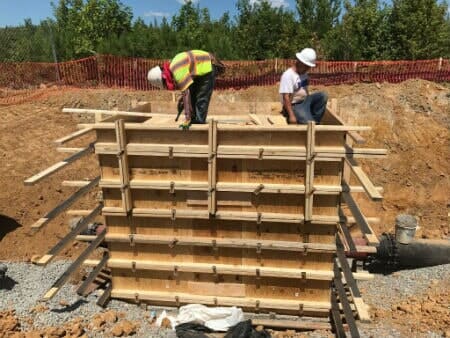
Conductor wiring uses one conduit that can carry multiple conductors, which is different from open or cable wiring. Conduit wiring layouts need to use little conduit and keep the lengths of individual conductors as short as possible. The wiring can be confusing if not done correctly. This article will give you some useful tips for wiring your office or home with conduit. Let's get started! Read on to learn more!
Flexible conduit
Flexible conduit is the best choice for any network, whether it's for small offices or large industrial buildings. Flexible conduits are safe and durable for all types and electrical applications. A wide range of flexible metal conduits is available for different applications. The C-series can be used in industrial environments while the D series is ideal for air conditioning or communication systems.

Flexible conduit can also be used to make dispenser cabinets. These tubes can be used to transmit fuel and house the wiring for the dispenser pump. These tubes are typically made from PVC, or other chemically resistant materials. The flexible conduit is connected via a fitting method that is easily removed and attached to the second segments. It's ready for use when the conduit is placed in the dispenser. A wiring connector establishes electrical continuity among the two segments once they are connected.
Electro-metallic tubing
This is an industrial and commercial common sight. This is a thin-walled metallic tube that joins together using compression fittings. Its threaded ends make it easy to install, but it is not as pliable as rigid metal conduit. The metal's flexibility is a benefit, regardless of what type of conduit it is used. This is why it is most commonly used in commercial buildings.
EMT is made mostly of galvanized steel, and occasionally aluminum. These materials are often covered with extra protective coatings. EMT is subjected to rigid metal conduit rules. There are however some exceptions. EMT comes in standard sizes from one to four inches. Supports are required at no more than 10 feet intervals. It can be fished, and can be used in tight spaces. It can be used indoors and outdoors, and it is often suitable for indoor and exterior wiring.
Water pipe
A water pipe conduit can present unique challenges when it comes to wiring. To get around this issue, you can pull the snake out of conduit. If you don't have cables, you can pull the snake free and let water run through. To make this easier, you can attach a small plastic bag to the end of the snake. The bag will hold the wires, so pull the snake slowly out of the way.

After that, you should make sure the conduit and cables are dry. It is important to seal the pipe, but it should not leak air. While duct putty is a common sealant, it has the potential to sag over time and leave openings as cables are moved around. Canister foam products should not be used as conduit sealants. They act like a sponge and allow moisture to pass through.
FAQ
Who pays for this service?
Your SCA specifies which party is responsible for paying for the service. The service provider may be entitled to compensation if it isn't paid in full.
How can I get service contract agreements?
You can obtain a standard form of SCA from your local government or contracting authority. You may also use our online tool to generate a quote. Once you have found out enough information, please send us your details so that we may contact you with more information.
Are there any ways I can prepare for negotiations before I go?
Yes!
There are many ways to prepare yourself for negotiations.
One method is to simply write down the terms and conditions.
What is a "service contract agreement"?
An agreement between two parties for the provision of services is called a Service Contract Agreement (SCA). The SCA describes the services that are being offered, how they should be performed, who is responsible for their payment, and when they should begin. The agreement also specifies what happens to the other party if they breach their obligations.
Statistics
- (d) Contractor disputes related to compliance with its obligation shall be handled according to the rules, regulations, and relevant orders of the Secretary of Labor (see 41 CFR60-1.1). (acquisition.gov)
- (ii) Name, address, and telephone number of each proposed first-tier subcontractor with a proposed subcontract estimated at $10 million or more. (acquisition.gov)
- Depending on the client's trustworthiness and financial stability, a deposit is usually 10 to 50% of the total contract amount. (lawdepot.com)
- While we offer all our high-quality services at competitive prices, we know that many who need our services are on fixed incomes, so we offer a 10 percent discount for seniors and military members. (homeservicecontractorsinc.com)
- (1) Except as provided in paragraphs (a)(4) and (a)(8) of this section, if the estimated amount of the contract or subcontract is $10 million or more, the contracting officer shall request clearance from the appropriate OFCCP regional office before- (acquisition.gov)
External Links
How To
What should a contract of service include?
Any business relationship requires a Service Agreement. It sets out what you expect from one another and how you intend to achieve these expectations. It also outlines when and where the other party must fulfill its contractual obligations.
The following are key elements for a successful SA
-
Both parties will agree to the scope of work.
-
Payment terms details, including start date and expiration dates for goods/services.
-
The project price must be agreed.
-
Any additional costs such as VAT etc.
-
Whether there is any other matter that should be discussed.
-
Who will be responsible if something goes wrong with the job?
-
How disputes will be settled
-
What happens when one party breaks the contract?
-
What happens in case of dispute.
-
When does the contract take effect?
-
What happens if one of the parties fails to perform.
-
What length of time will you be required to pay invoices
-
Who pays for travel expenses?
-
Where the money is coming from.
-
What happens if the client changes his mind about the project?
-
What happens to the supplier if they don't show up.
-
Who is allowed to access the site during construction
-
What happens if the client cancels the project?
-
What happens when the product is defective?
-
What happens if a manufacturer refuses to provide parts?
-
What happens if the equipment is damaged?
-
What happens if a project takes longer than expected?
-
What happens if you don't complete the work within the set timeframe?
-
What happens to the project if it isn't up-to-standard?
-
What happens if costs exceed expectations?
-
What happens when the materials are not delivered in time?
-
What happens if the material arrives broken?
-
What happens if the products are not up to standard.
-
What happens if you cancel the job before it is complete?
-
What happens if the company goes bust.